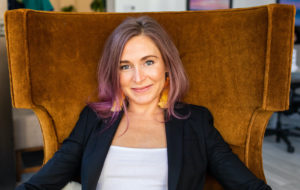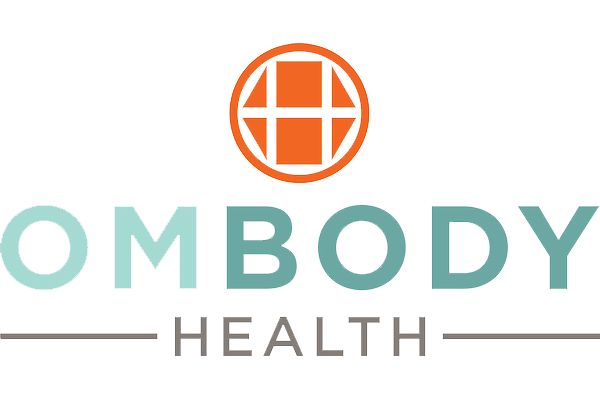Do you have a clear sense of your boundaries? Or do you struggle to identify that a boundary has been crossed until later — after the point you feel exhausted or resentful?
If you DO have a clear sense of your boundaries (go you!), do you know how to communicate them in a way that brings other people closer to you?
Many of us were raised on the misconception that having boundaries was bad. Of course, it’s much more nuanced than this, but here me out…
Maybe we received love when we did things the “right” way — i.e., the way we were told — and punishment when we put our foot down.
Maybe we were forced to wear things we didn’t want to wear, or eat things we didn’t want to eat, or hug people we didn’t want to hug, or come out of our room before we were ready…
Eventually, we learned that the way to get love and connection, and keep the peace, was to adhere to what others wanted or expected of us, rather than what felt true in our own bodies.
I’ve been working on my personal and professional boundaries for years. From how much I say yes to, to how I honor my limits and needs in all different types of love relationships – romantic, platonic, familial…
And as a people-pleasing hyper-independent in recovery, it has not always come easy.
While my journey with acknowledging and expressing my boundaries over the years has been wrought with tears and frustration, it has also been SO EMPOWERING.
And there is one tool that took my understanding and application of boundaries to the next level…
BOUNDARY MAPPING!
I learned Boundary Mapping from Celeste and Danielle, my teachers at Somatica Institute. The first time I did the exercise in class I had a major “a ha” moment…
Yes, all the years of inner work had helped me become aware of my feelings and needs, but even still I was allowing some of my boundaries to be crossed – hello frustration and resentment!
With a few simple boundary mapping and communication tools, I have a clearer grasp on MY unique capacities and am able to be WAYYYYY more self-honoring. And as a result I feel more available for and closer to the people in my life.
What is Boundary Mapping?
Boundary Mapping is a tool that helps us rediscover our embodied boundaries, and thus step into a higher level of self-love and self-expression.
And communicating our boundaries clearly and lovingly brings others closer and inspires them to give us what we need and want.
You see, it’s not just having boundaries (or not) that determines whether we feel protected, connected, or both, but it’s also in how we communicate them that matters.
Signs of Healthy, Porous & Rigid Boundaries
I’m sure you know that healthy boundaries are an important part of mental and emotional wellness.
Healthy boundaries are the key to vulnerability and connection that’s missing in so many relationships…
Healthy Boundaries help to…
- Boost self-worth and self-esteem
- Prevent burnout
- Provide a sense of identity (feelings, values, limits, needs, desires)
- Bring the focus to you and your well-being (especially important for caretakers and people pleasers)
- Create stronger, more honest, supportive and authentic relationships
So what exactly ARE boundaries anyways?
We all have a unique set of capacities and limits, and our boundaries are how we communicate and enforce those limits.
Disordered boundaries can be porous or rigid…
Signs of Porous Boundaries
- Chronically busy, over scheduled, tired
- Feel like your voice isn’t being heard – sometimes feel like a doormat
- Fear rejection, criticism, disapproval; conflict avoidant
- Trust people too quickly – before they have given you a reason to trust them
- Feel guilty often (when you’ve done nothing wrong, such as taking time for yourself)
Signs of Rigid Boundaries
- Don’t believe in second chances
- Things need to be done your way – e.g., you don’t trust other people to do things for you for fear they won’t do it right.
- Surface level or lopsided relationships – e.g., you have trouble being vulnerable, you’re always “the rock” or listener.
- Often feel alone or misunderstood
Signs of Healthy Boundaries
- Know where you end and others begin (emotionally, energetically)
- Clear sense of your needs and preferences, with the ability to be flexible and try new things
- Say no without guilt
- Ask for what you need/want
- Space in your life for self-care and joy
- There is a time and place for both rigid AND porous boundaries (you might be thinking whhatttt? I’ll talk more about this in my free class coming up next week – click here for details).
And chances are your boundaries take different forms depending on who you’re with, how you’re feeling, etc…
Your boundaries will never be perfect, and that’s not the goal (sayonara perfectionism!!)…
Your unique boundaries are an important part of your story. Sharing them in a loving and connected way means sharing yourself. And the world needs more of YOU.
So if you resonated with any of the signs of Rigid or Porous Boundaries above, check out my Free Boundary Mapping Masterclass Replay.
By simply watching, listening and receive what I have to teach, you will feel more attuned to your unique boundaries and empowered to express them.
Grab my free recording to learn life-changing boundary mapping and communication tools that will help you feel more entitled to your boundaries and empowered to express them.
About the Author: Allie Andrews
 With a decade of experience in the wellness and coaching industry, Allie has partnered with 65 companies and helped hundreds of achievers and workaholics find a pace and rhythm to living that feels sustainable and nourishing.
With a decade of experience in the wellness and coaching industry, Allie has partnered with 65 companies and helped hundreds of achievers and workaholics find a pace and rhythm to living that feels sustainable and nourishing.
As a coach, Allie helps her clients grow their impact while prioritizing their health, deepening their relationships, and following their joy.
Allie is a lifelong student of personal growth, certified health coach, yoga teacher, and intimacy and relationship coach.
Instagram: @iamallieandrews // Facebook: Allie Andrews Coaching // LinkedIn

